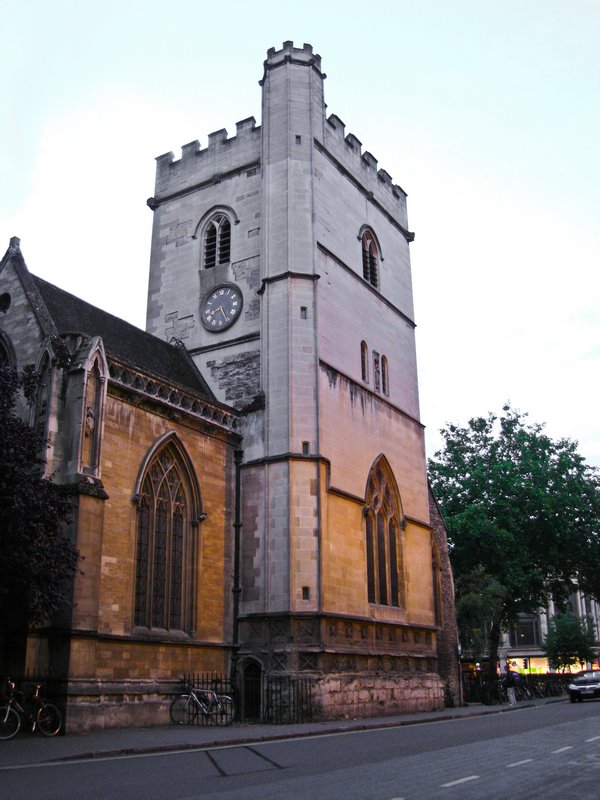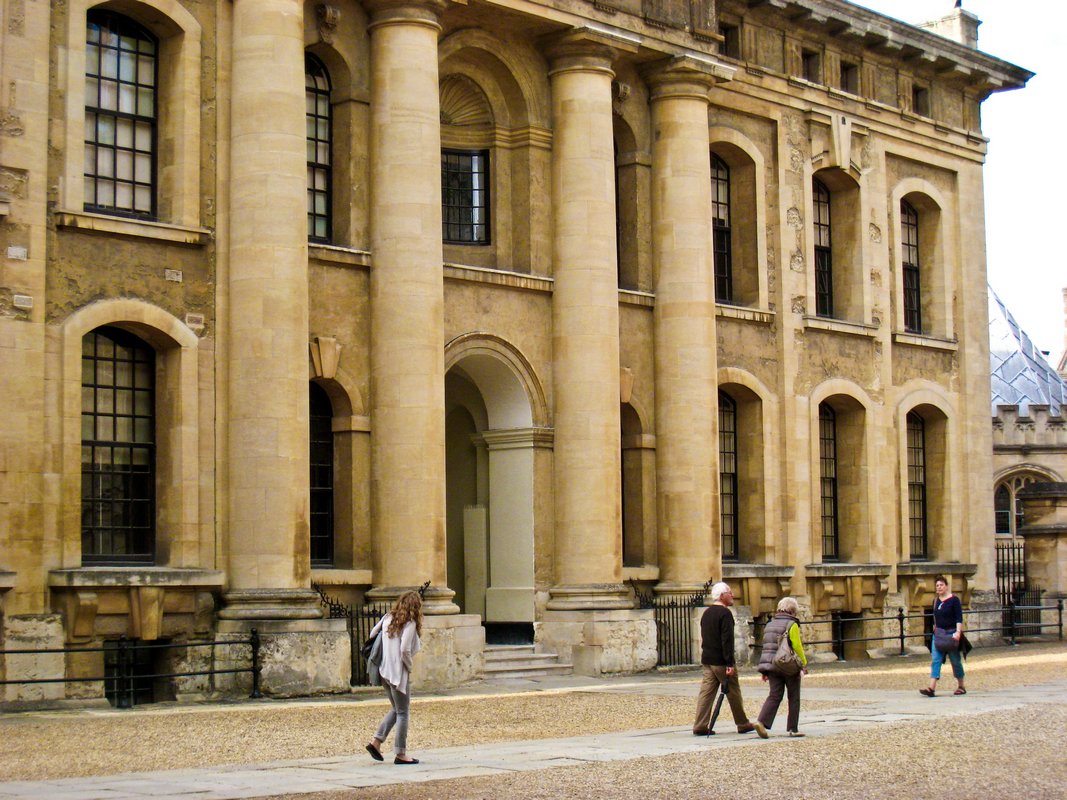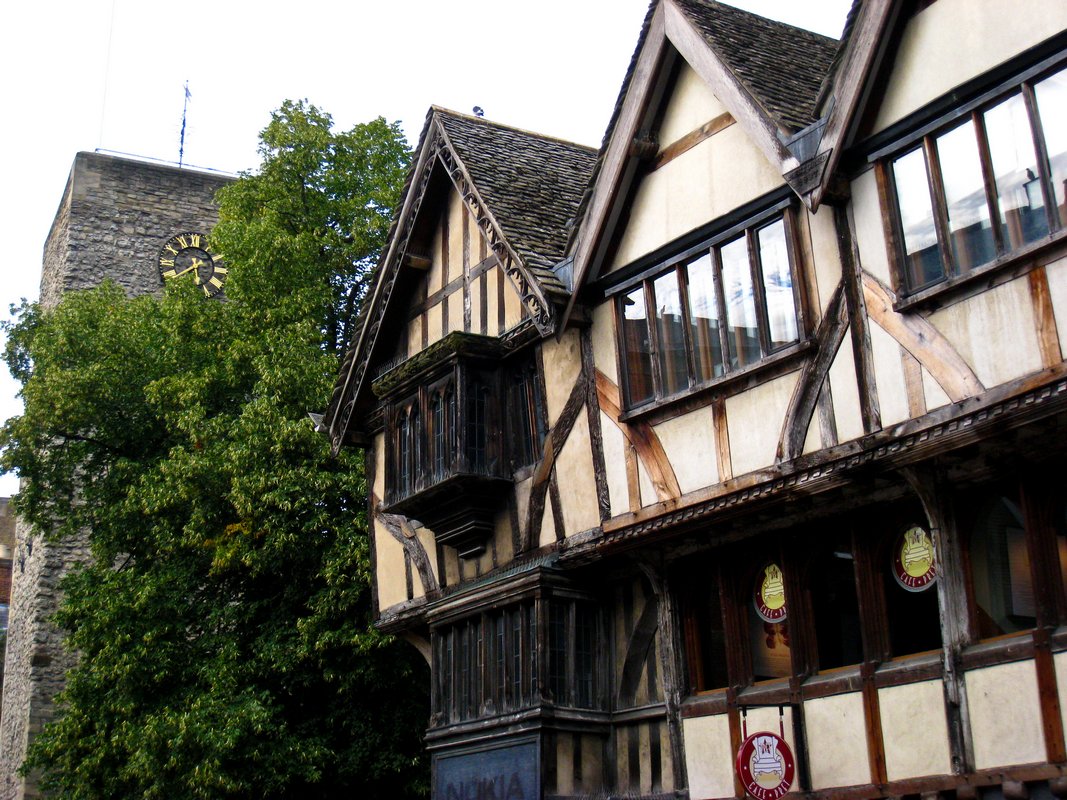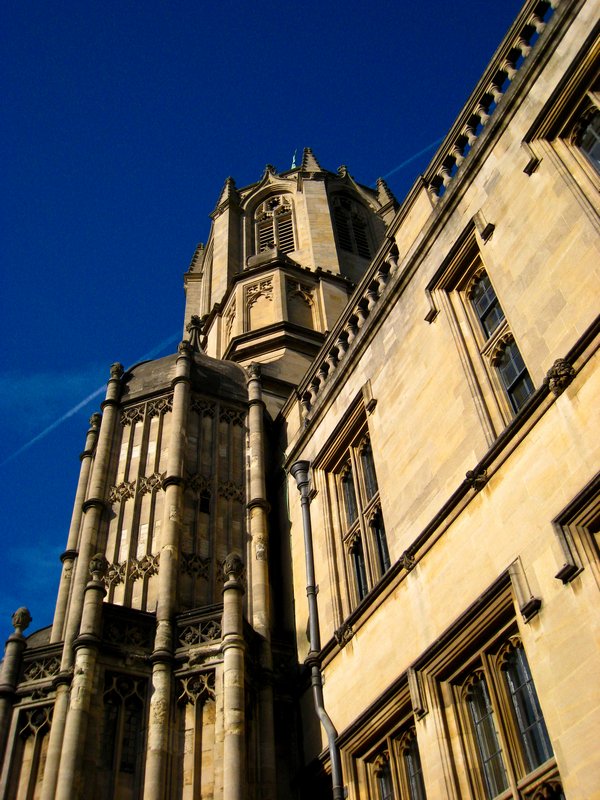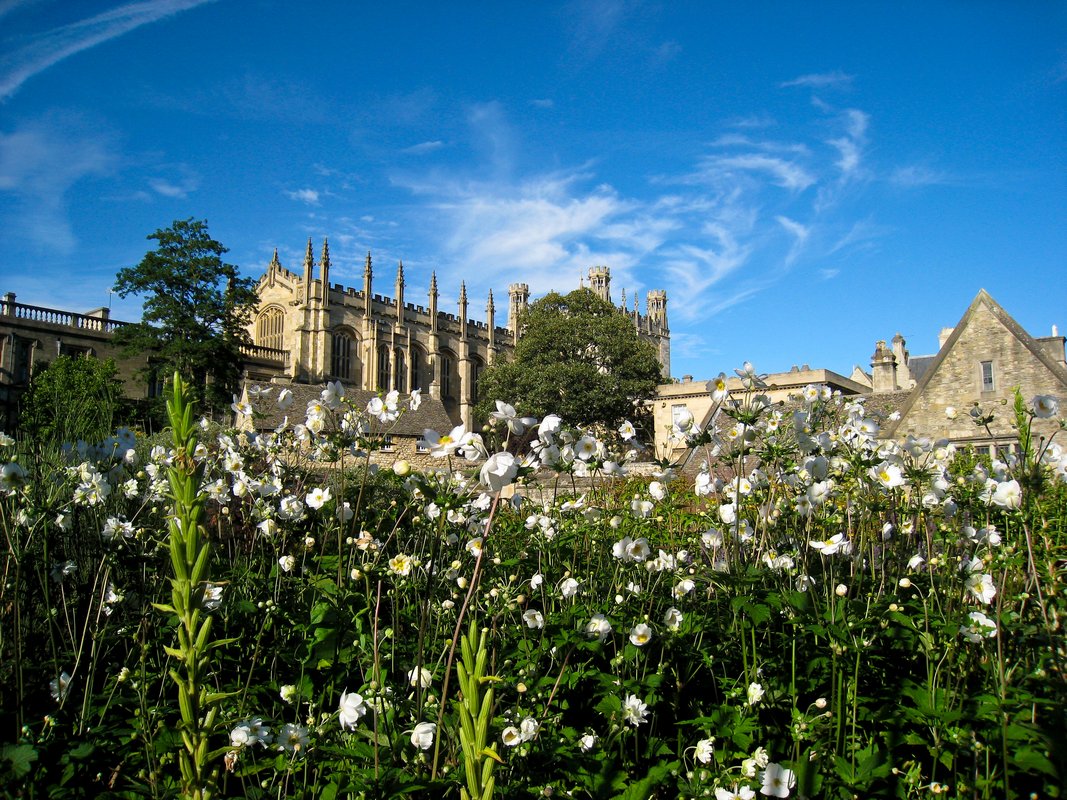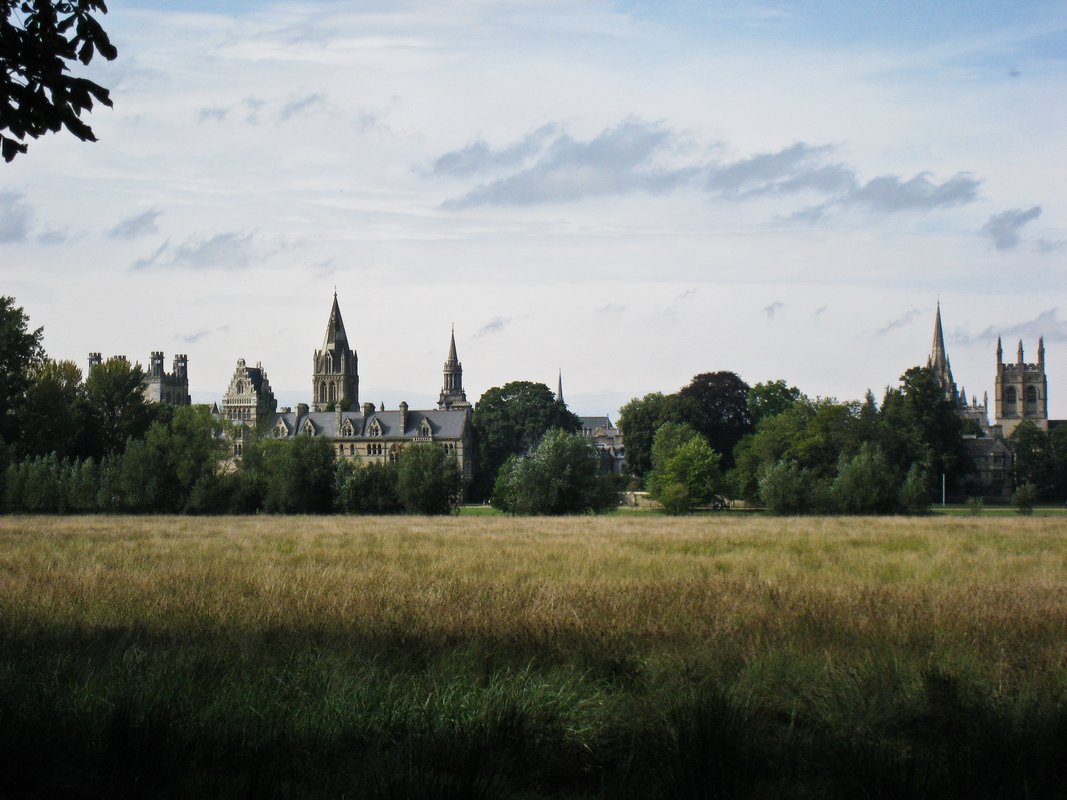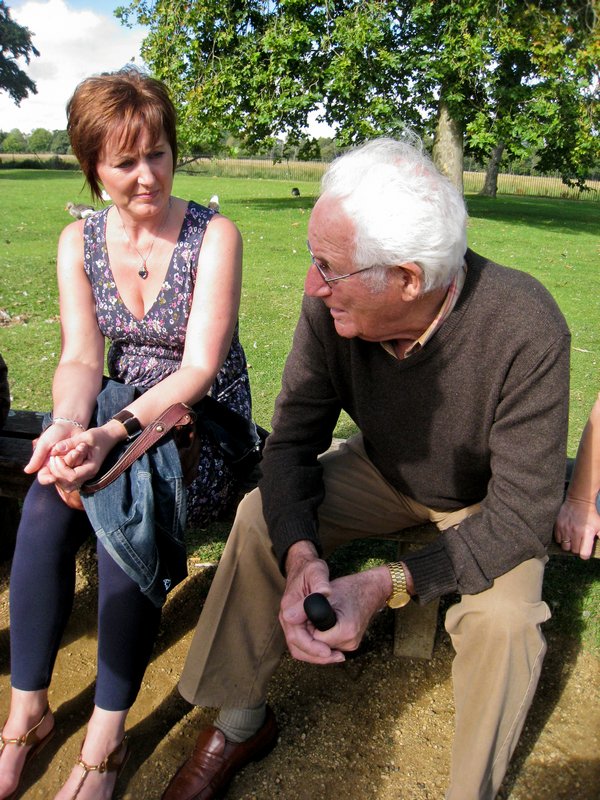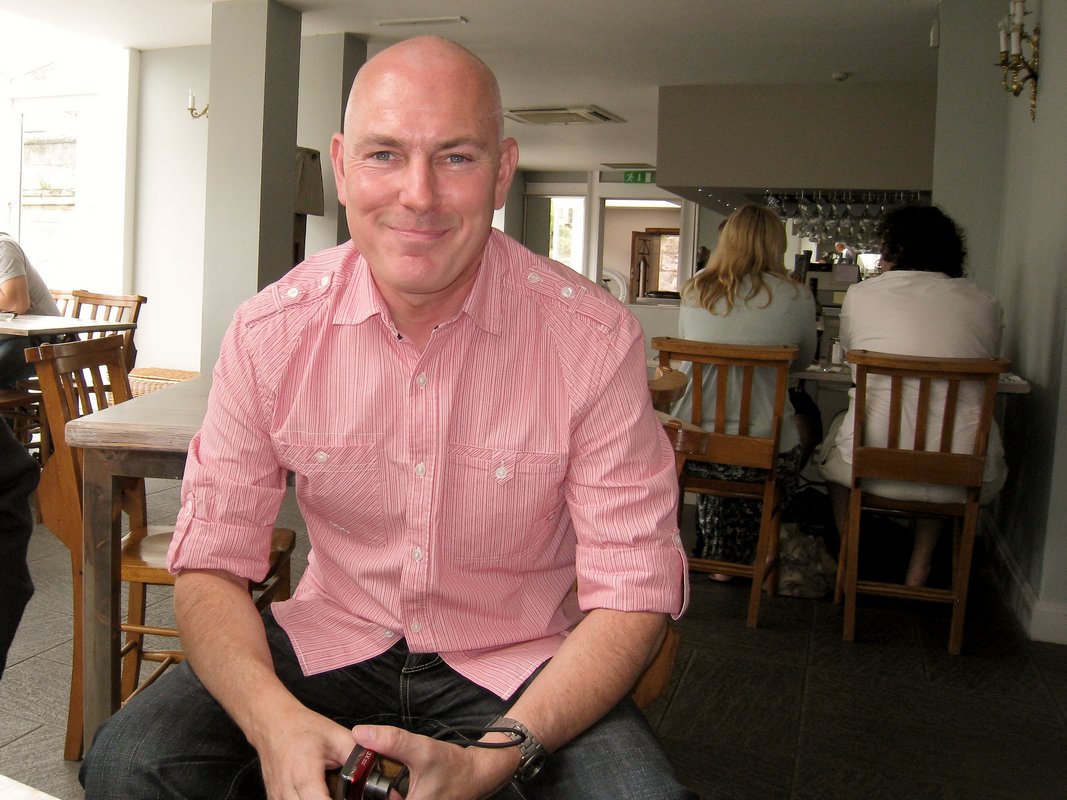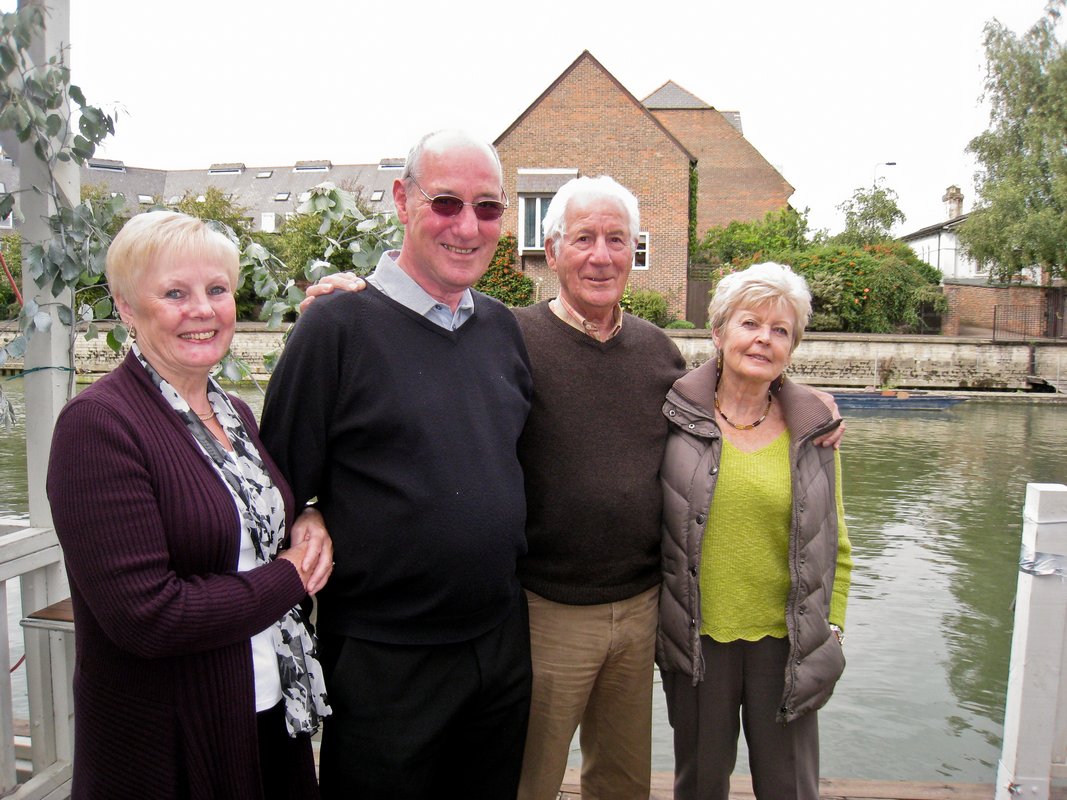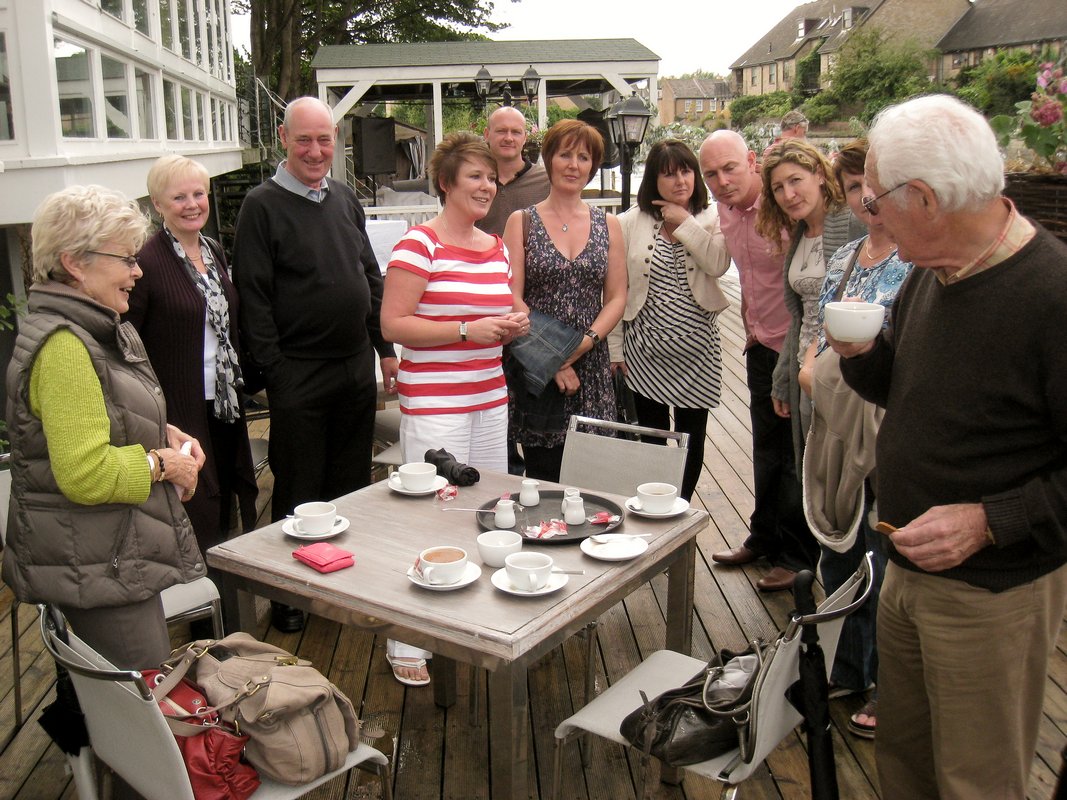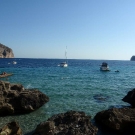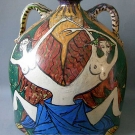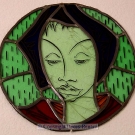Tomas Harris created a lot of art, of many kinds, including ceramics, oil paintings, engravings, dry points, lithographs, watercolours, sketches and also tapestries (View my Tomas Harris ART Gallery, showing almost 200 pieces <—click here ).
Tomas wanted to try his hand at making tapestries just like Goya Francisco did, using the same weavers that Goya had used. Goyas’ exclusive tapestries were all made at the Royal Factory in Madrid, so that was why Tomas had his three made there too.
So in the early 1950’s Tomas created three cartoons (the weavers use these as blueprints) and had a tapestry woven for each one. It was a very lengthy and expensive process.
 <— This is one of the woven tapestries which is now (in all its glory, and in colour) at the Bristol Museum at the time of writing, but is not currently on public display. Notice the weavers personal signature woven into the fabric (bottom right).
<— This is one of the woven tapestries which is now (in all its glory, and in colour) at the Bristol Museum at the time of writing, but is not currently on public display. Notice the weavers personal signature woven into the fabric (bottom right).
 The Factory had some kind of official state support under Franco, but in recent years the owners have been trying to sell it without much success.
The Factory had some kind of official state support under Franco, but in recent years the owners have been trying to sell it without much success.
In 1955, Tomas organised and held an exhibition for his tapestries, in Madrid, with a famous speaker friend of his, Valentine de Sambricio, who was an Art Historian.. The exhibition provided information about the process of creating the tapestries, and how the weavers signature came to be in the border of the final pieces. The photos of the looms above are rare and the looms were part of the exhibits in the exhibition.
Today the thee tapestries are in museums around the world, one in Spain, one in England, and one in Australia.
This Tapestry is held at the Bristol Museum in England, but is not on public display.
This tapestry is at the museum in Seville, Museo de Sevilla.
The third tapestry is at a museum in Melbourne, at the National Gallery of Victoria (Victoria State Gallery). It was gifted to the museum by Tomas’s three sisters (Enriqueta, Conchita and Violeta Harris) after the 1975 Tomas Harris Courtauld Exhibition. (The introduction in the catalogue for the 1975 exhibition was written by the well known Anthony Blunt <— read the introduction
Tomas was well known and respected in the Art World – worldwide.
Apparently, last year, 2009, an exhibition of modern tapestries made by the Royal Factory in Madrid, was held, and a catalogue was produced. Unfortunately, there was no mention of Tomas Harris in it, and so it has been assumed that it is very likely that Tomas had actually commissioned the tapestries to be made at the factory.
Subscribe to Email updates <— here, to stay informed.
I am currently hoping to receive new information about these tapestries from a major expert on tapestries in Spain, who will be visiting the museum in Seville in the near future, and who has very detailed knowledge of the history of the Madrid factory and currently works as curator of the Royal Tapestry collection at the Palace in Madrid. I will update this post if/when I receive further information.










